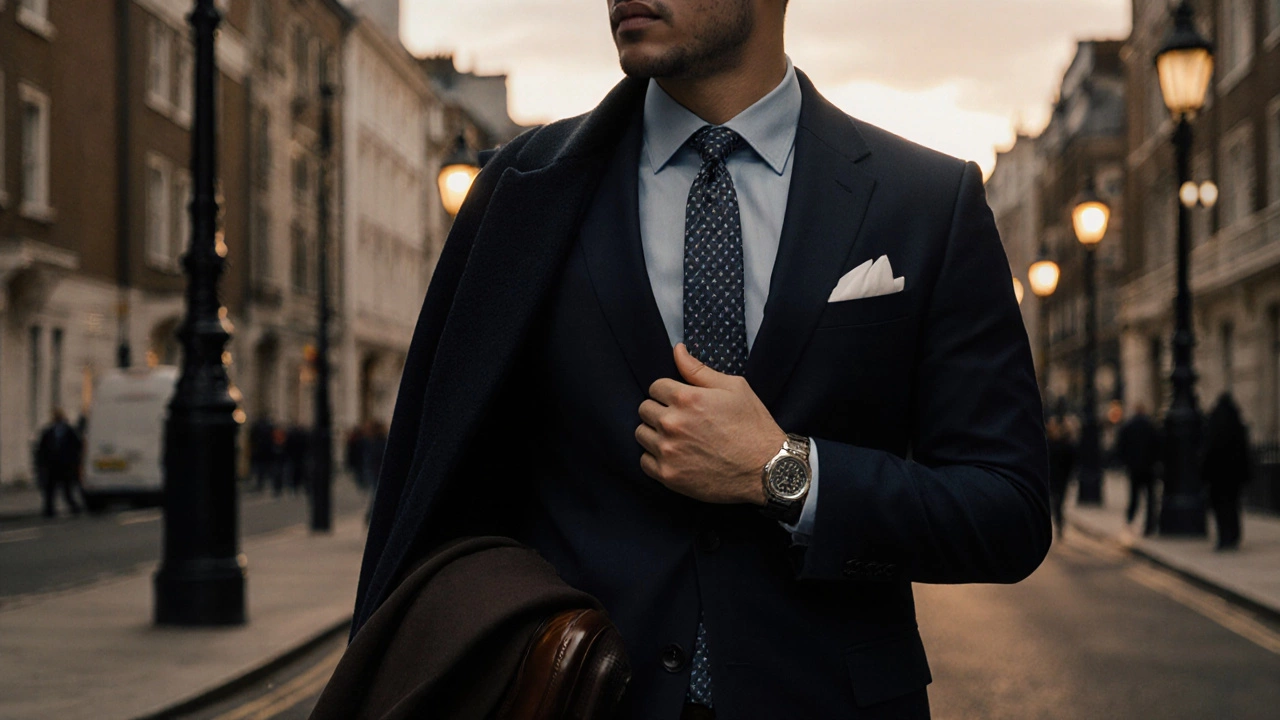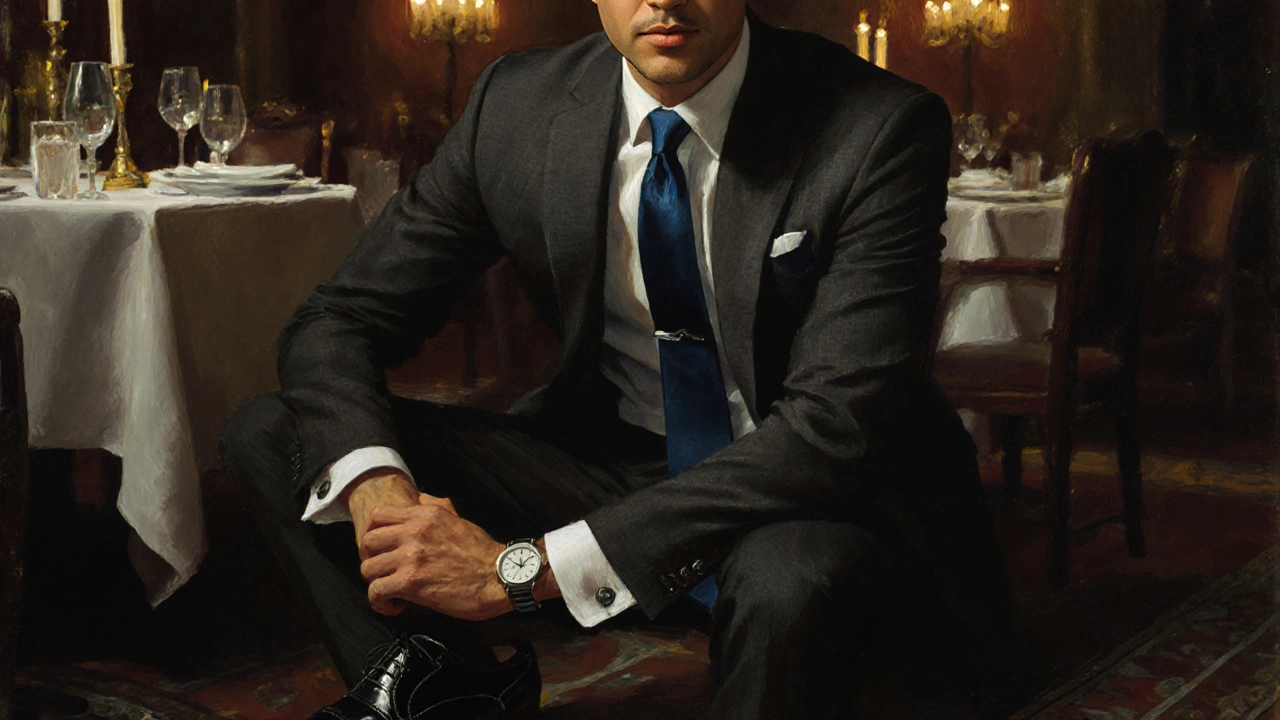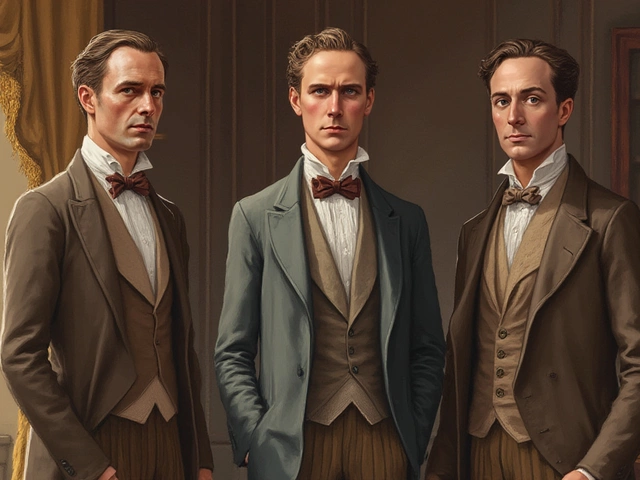Occasion Outfit Guide
What's the occasion?
Select your event type to determine the right level of formality
Select an occasion and click "Calculate Outfit" to see recommendations
Want to step out with confidence and a timeless vibe? Mastering the art of dressing like a gentleman isn’t about copying a look from a movie set; it’s about understanding the building blocks of refined clothing and applying them to everyday life. Below you’ll find a straightforward roadmap that walks you through the essential pieces, the right fit, and the subtle details that turn a good outfit into a great one.
Start with the Foundation: The Suit
Suit is a matching jacket and trousers that form the foundation of formal menswear. A well‑cut suit in navy or charcoal gives you instant credibility. Aim for a single‑breasted, two‑button style; it flatters most body types and looks sharp in both office and evening settings. Have the shoulders aligned with your own and the jacket’s length stop just at the curve of your hips. If you can, get the sleeves shortened by a tailor so just a hint of shirt cuff shows - that’s a classic sign of a gentleman’s attention to detail.
Choose the Right Shirt
Dress shirt is a button‑down garment made from woven cotton, typically featuring a turn‑down collar and French cuffs for formal wear. Stick to crisp white or light blue; they pair effortlessly with most suits. Look for a slim fit that skims the torso without clinging. If you’re new to French cuffs, start with a simple straight cuff and upgrade to cufflinks once you feel comfortable. A well‑pressed shirt signals discipline - a trait every gentleman values.
Mind the Shoes
Oxford shoes are a type of lace‑up leather shoe with a closed lacing system, known for their sleek, formal appearance. Black Oxfords work for most business occasions; dark brown is a versatile alternative for evening events. Keep the leather polished but avoid a mirror shine - a subtle satin finish looks more sophisticated. Invest in a good quality pair; they’ll mold to your foot over time, improving comfort and style.
Add a Touch of Color with Ties
Tie is a long piece of fabric worn around the neck, typically made of silk or knit material, used to add color and formality to a shirt. For a beginner, start with solid colours or simple patterns like a subtle dot. The width should match the lapel - around 3inches for most modern jackets. Learn the basic four‑in‑hand knot; it’s quick and looks neat. Save bold patterns for occasions where you want to make a quiet statement.

Layer Smartly with Blazers and Overcoats
Blazer is a semi‑formal jacket made from a softer fabric than a suit jacket, often featuring contrasting buttons adds versatility. Pair a navy blazer with chinos and a crisp shirt for a polished smart‑casual look. When winter hits, a classic wool overcoat in camel or charcoal keeps you warm without sacrificing style. Ensure the overcoat’s length covers your suit jacket, creating a clean silhouette.
Accessorize with Purpose
Accessories are where personality shines. A quality watch is a time‑keeping device worn on the wrist, often crafted from metal and leather, that adds a subtle hint of luxury with a leather strap pairs well with both formal and casual outfits. For formal occasions, add a pocket square - a crisp white square folded neatly into the jacket pocket - and, if you’re feeling adventurous, a pair of cufflinks are decorative fasteners used to secure the cuffs of dress shirts, often made from metal or enamel. Keep the metal tones consistent (silver with silver, gold with gold) for a cohesive look.
Fit Over Brand: The Real Secret
Even the most expensive label can look sloppy if it doesn’t fit you. Prioritise a good fit above brand names. A well‑tailored off‑the‑rack piece can look better than an ill‑fitting designer item. Learn your measurements - shoulder width, chest, waist, inseam - and keep them handy when shopping. Most reputable retailers will offer basic alterations; use them.
Building a Capsule Wardrobe
Think of a gentleman’s closet as a collection of interchangeable pieces. Here’s a quick checklist to get you started:
- Two navy suits (one lightweight, one wool)
- One charcoal suit
- Three white dress shirts and two light‑blue shirts
- Four quality Oxfords (black, dark brown, tan)
- Two leather belts matching shoe colours
- Three ties (solid, subtle pattern, striped)
- One navy blazer, one khaki blazer
- One wool overcoat, one trench coat for milder days
- Accessories: watch, pocket square, cufflinks, tie bar
With these basics, you can mix‑and‑match to cover virtually any occasion without looking like you’re trying too hard.

Formal vs Smart‑Casual: Quick Comparison
| Item | Formal Choice | Smart‑Casual Choice |
|---|---|---|
| Jacket | Two‑piece suit (navy or charcoal) | Unstructured blazer or sport coat |
| Shirt | White dress shirt with French cuffs | Oxford button‑down or soft cotton shirt |
| Pants | Matching suit trousers | Chinos or tailored trousers |
| Shoes | Black or dark brown Oxfords | Derby shoes, loafers, or clean leather sneakers |
| Accessories | Tie, pocket square, cufflinks | Unstructured tie or no tie, simple watch |
This table shows you can keep the same quality standards while adjusting formality to fit the setting. The goal is always a polished, cohesive look.
Common Pitfalls and How to Avoid Them
- Oversized clothing: If a jacket swallows your shoulders, instantly looks sloppy. Opt for a slimmer cut.
- Clashing patterns: Pair a patterned tie with a solid shirt and a plain blazer. Too many prints at once creates visual chaos.
- Neglecting shoe care: Dirty soles or scuffed leather break the flow of a refined outfit. Use a leather conditioner weekly.
- Wrong belt‑shoe colour match: The belt should mirror the shoe tone - black with black, brown with brown.
- Ignoring occasion: A full suit at a casual garden party can appear over the top. Switch to a blazer‑and‑chinos combo.
By keeping these points in mind, you’ll sidestep the most common style missteps.
Putting It All Together: A Sample Outfit for a Business Dinner
- Start with a charcoal suit.
- Choose a white dress shirt with a classic spread collar.
- Add a deep navy silk tie and a matching pocket square.
- Wear polished black Oxfords and a black leather belt.
- Finish with a silver‑tone watch and simple cufflinks.
This combination hits every mark of a gentleman’s look: fit, quality, colour harmony, and subtle detail.
Frequently Asked Questions
How often should I get my suits tailored?
A good rule of thumb is to have a suit adjusted after each major weight change (about 5-10lbs). Otherwise, a minor tweak every 6-12months keeps the fit sharp.
Can I wear sneakers with a blazer?
Yes, if the sneakers are clean, low‑profile leather and the outfit leans smart‑casual. Avoid chunky trainers and stick to neutral colours.
What’s the difference between a tie bar and a tie clip?
Both keep a tie in place, but a tie bar is a solid piece that slides under the tie, while a clip grips the front. A bar offers a cleaner look for formal ensembles.
How do I choose the right pocket square colour?
Start with a white square for a safe choice. For a pop of colour, pick a hue that mirrors the tie or shirt pattern, but keep it subtle - no loud prints for the first few outfits.
Is it okay to wear a belt with suspenders?
Generally no. Choose one or the other. Suspenders work best with a formal suit, while a belt is standard for most everyday looks.
By following these steps and focusing on fit, quality, and thoughtful details, you’ll automatically embody the confident, refined aura that defines a true gentleman.






